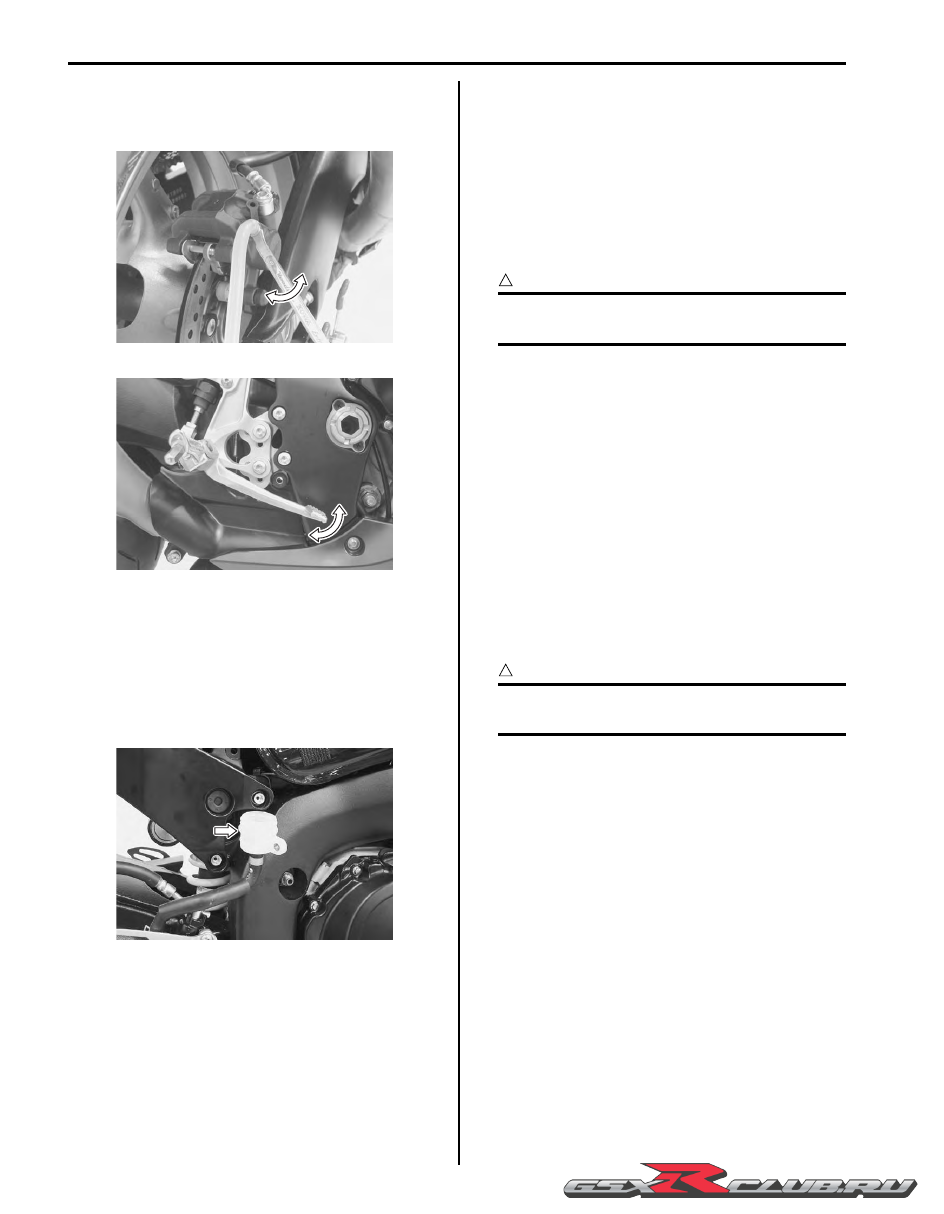Suzuki GSX-R1000. Service Manual - part 32

4A-8 Brake Control System and Diagnosis:
8) Loosen the air bleeder valve and pump the brake
pedal until the old brake fluid flows out of the brake
system.
9) Close the air bleeder valve and disconnect the clear
hose.
Tightening torque
Air bleeder valve (Rear caliper): 6 N·m (0.6 kgf-
m, 4.5 lbf-ft)
10) Fill the reservoir with brake fluid to the upper line of
the reservoir.
11) Bleed air from the brake fluid circuit. Refer to “Air
Bleeding from Brake Fluid Circuit” (Page 4A-4).
12) Install the diaphragm and reservoir cap.
13) Install the removed parts.
Front Brake Hose Removal and Installation
B947H14106009
Removal
1) Drain brake fluid. Refer to “Brake Fluid
2) Remove the front brake hoses as shown in the front
brake hose routing diagram. Refer to “Front Brake
Hose Routing Diagram” (Page 4A-1).
Installation
CAUTION
!
The seal washers should be replaced with the
new ones to prevent fluid leakage.
1) Install the front brake hose as shown in the front
brake hose routing diagram. Refer to “Front Brake
Hose Routing Diagram” (Page 4A-1).
2) Bleed air from the front brake system. Refer to “Air
Bleeding from Brake Fluid Circuit” (Page 4A-4).
Rear Brake Hose Removal and Installation
B947H14106010
Removal
1) Drain brake fluid. Refer to “Brake Fluid
2) Remove the rear brake hoses as shown in the rear
brake hose routing diagram. Refer to “Rear Brake
Hose Routing Diagram” (Page 4A-2).
Installation
CAUTION
!
The seal washers should be replaced with
new ones to prevent fluid leakage.
1) Install the rear brake hose as shown in the rear
brake hose routing diagram. Refer to “Rear Brake
Hose Routing Diagram” (Page 4A-2).
2) Bleed air from the rear brake system. Refer to “Air
Bleeding from Brake Fluid Circuit” (Page 4A-4).
I947H1410015-01
I947H1410016-01
I947H1410017-03